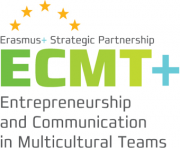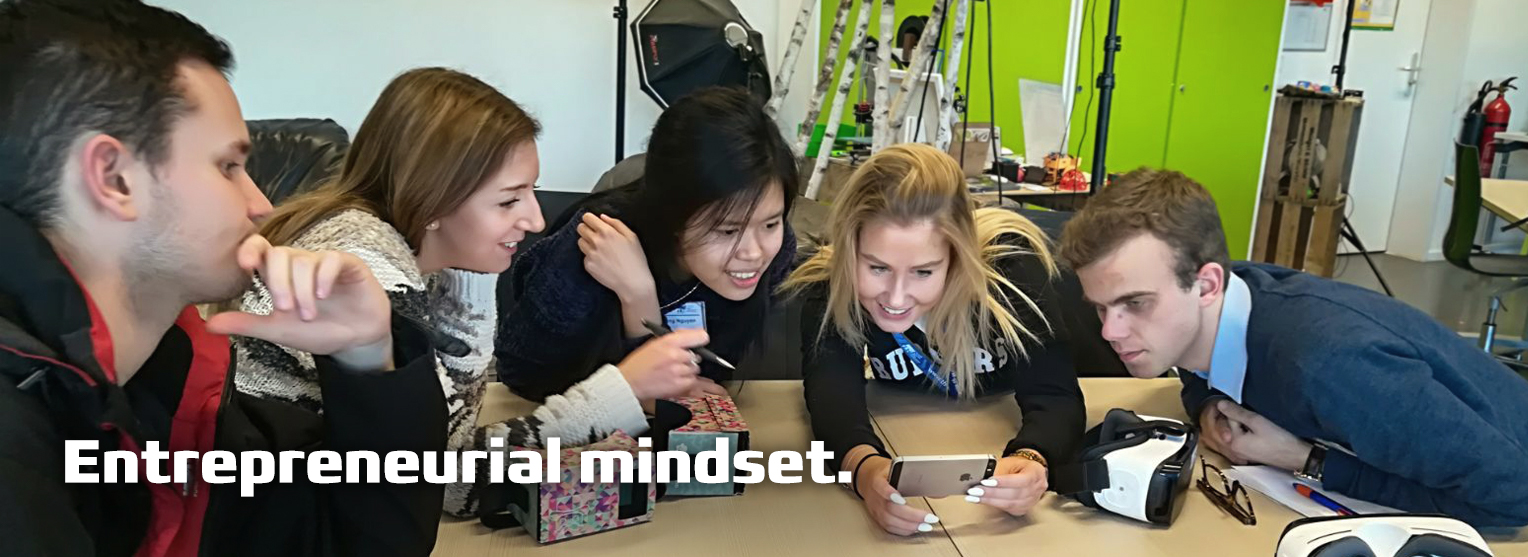by Martin Bradbeer (Technical University of Wildau) and Michal Stoklasa (Silesian University School of Business Administration Karvina)
Welcome ECMT+ Blended Module!
By following this guide you will learn to test and evaluate your business ideas effectively.
In order to test if your solution (business idea) meets the customer’s pain points, you should be aware of your potential customer’s problems. Make sure that the assumed customer pain/problem is an existing one from the perspective of your customer
Step 1: Test the customer’s pain points/problems
List the three main problems of your potential customer in the context of your business idea. Which kind of problem do you want to solve for your potential customers. Try to focus on three key problems only.
If you are not sure about our assumption try to learn more about the customer’s pain points by using methods like customer observation, shadowing, problem interviews or context interviews, customer journeys, personas or “a day in the life of…” diaries.
Note: Do not put your business idea in the focus but the three key problems you want to test and explore the pain points!
In order to test the pain points, conduct problem interviews.
Course of a problem interview:
Contents of a problem interview report:
Problem Interview Guidelines:
date:
contact details:
name:
eMail:
Demographics: (collect relevant items in the context of your business idea)
Age:
Number of children:
Duration of...
How often do you use/consume/search for...
Problem 1: List/describe the assumed problem.
Priority:
Stress level:
How is the problem solved today by the potential customer?
Problem 2: List/describe the assumed problem.
Priority:
Stress level:
How is the problem solved today by the potential customer?
Problem 3: List/describe the assumed problem.
Priority:
Stress level:
How is the problem solved today by the potential customer?
List comments/recommendations:
Conduct as many interviews as you can, between 40 and 50 interviews. It is very important to figure out the right pain points/problems in order to develop a solution that meets customer’s problems. You also have the chance to identify your future customers and early adopters in this step.
As a consequence of this step you may have to adjust your business idea or to rearrange elements of your business idea in order to address customers pain points properly.
Results:
(1) Three tested confirmed or declined customer problems
(2) New customer problems
(3) Re-phrased customer problems
Outline the problem solution precisely based on the identified and tested problems.
A great source of examples can be found here Pain Points vs. Solutions
Another source of examples can be found here SIMPLE FORMULAS FOR FINDING YOUR CUSTOMER’S PAIN POINTS
You can also check this article What’s a Pain Point? A Guide for Startups
Step 2: Test the Solution to market fit
Try to answer the following guiding questions in this step.
- Who has stress? (early adopters)
- How can you identify early adopters?
- With which features should you start?
- Are the customers willing to pay?
- Which price will be accepted by the customers?
Conduct a solution interview in order to test the solution to market fit.
Course of a solution interview:
Source: Maurya, 2013, 103
In the center of the solution interview is the demo/prototype of your solution. With help of the demo you can explain problems (tell a story) and solutions. You have to find out which features of the demo are most likely to be wanted, which features are not necessary and which features are missing. In order to implement the solution interview, you have to prepare a demo/prototype of the solution. Demos can be sketches, simulations, 3D-models, videos, mockups or any kind of simple visualization. It should not take too much time to create a demo/prototype (45 minutes till 1 day).
Contents of a solution interview report:
solution interview guidelines:
date:
contact details:
Demographics:
Solution: Describe one key aspect/feature of the solution.
- Priority: Which priority does it have from the customer’s perspective?
- Stress level: Which stress level does it have from the customer’s perspective?
- Comments: List comments on the presented aspect/feature of the solution.
Solution: Describe one key aspect/feature of the solution.
- Priority: Which priority does it have from the customer’s perspective?
- Stress level: Which stress level does it have from the customer’s perspective?
- Comments: List comments on the presented aspect/feature of the solution.
Solution: Describe one key aspect/feature of the solution.
- Priority: Which priority does it have from the customer’s perspective?
- Stress level: Which stress level does it have from the customer’s perspective?
- Comments: List comments on the presented aspect/feature of the solution.
List general comments/recommendations:
Are the potential customers willing to pay?
Note: Do not ask how much they are willing to pay but test your revenue stream ideas and the prices you are thinking of.
Try to do solution interviews with 15 to 20 potential customers.
Results:
- General feedback on the solution
- Features of main interest
- Features you should add
- Features you should delete
- Insights for pricing
Here you can find incredibly good examples and a video explanation Mastering the Problem Space for Product/Market Fit by Dan Olsen
And here is perfect step-by-step guide how to test it all with examples How To Achieve Problem-Solutions-Market Fit Step By Step
Step 3: Create and test a Minimum Viable Product (MVP)
The main idea of the MVP is the fast establishment of a product with the most necessary features (e.g. landing page in terms of a web based idea or a pop up store). Only the most necessary features are implemented or built. The MVP goes public in order to gain feedback from potential customers. The feedback is used to extend and improve the MVP.
Source: Reshetilo, 2017
In this step you aim to find answers to the following key questions:
- Does the MVP find attention?
- Does it become clear what it’s all about?
- Are the potential customers following the activation flow?
- What are the most promising aspects of the product?
- What are burning points in terms of usability?
- Are there enough potential customers?
- Are the potential customers willing to order and to pay?
Source: Maurya, 2013, 130
Result:
- Usability check and insights for improvement
- Price test
- Customer insights
- Customer’s readiness to purchase the product
Great article with many links What does “Minimum Viable Product” actually mean, anyway?
Excellent article about MVP with many examples What is a Minimum Viable Product
Literature
Gentz, J. (2015): 8 Besonderheiten von Lean Startups in: https://www.deutsche-startups.de/2015/01/26/8-besonderheiten-von-lean-startups/, abgerufen am: 20.05.2018
Maurya, A. (2013): Running Lean:[das How-to für erfolgreiche Innovationen; für Startups, Existenzgründer und Produktentwickler]. O'Reilly Germany.
Reshetilo, K. (2017): What Type of MVP is Right for Your Startup? in: https://greenice.net/type-mvp-right-startup/, abgerufen am: 20.05.2018
Ries, E. (2014). Lean Startup: Schnell, risikolos und erfolgreich Unternehmen gründen. Redline Wirtschaft.
Startplatz (2018): MVP – Minimum Viable Product in: https://www.startplatz.de/startup-wiki/mvp/, abgerufen am 20.05.2018





